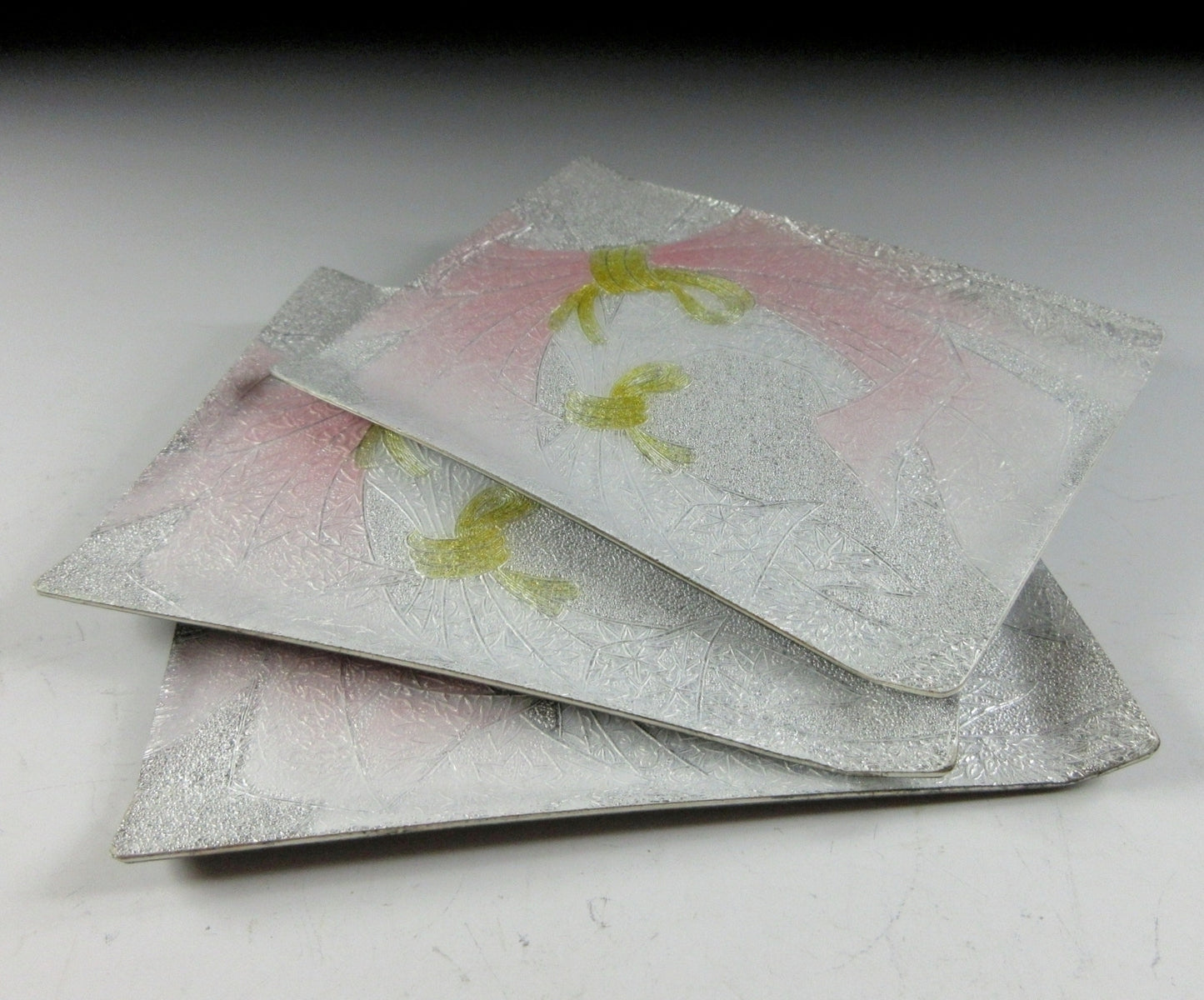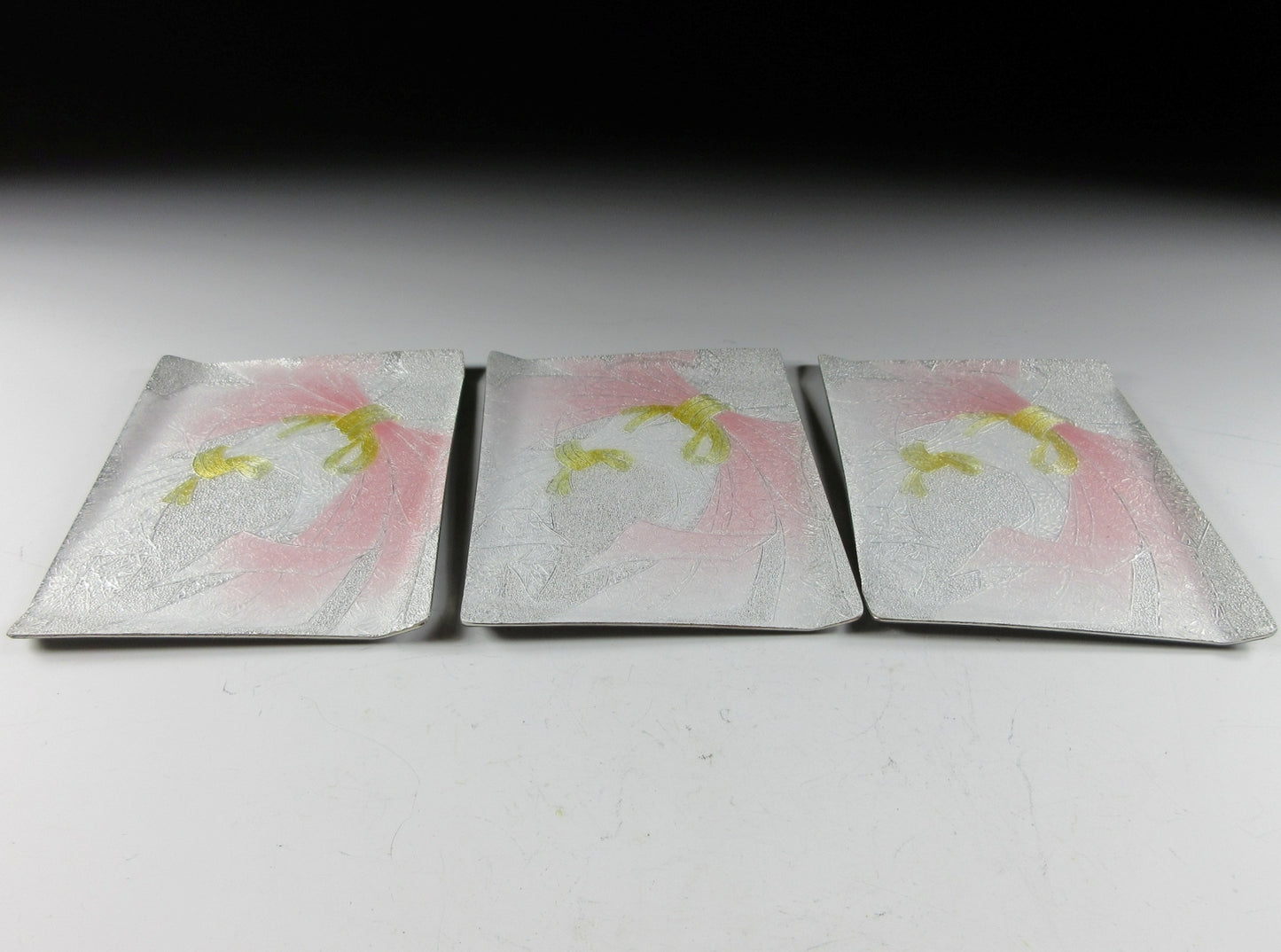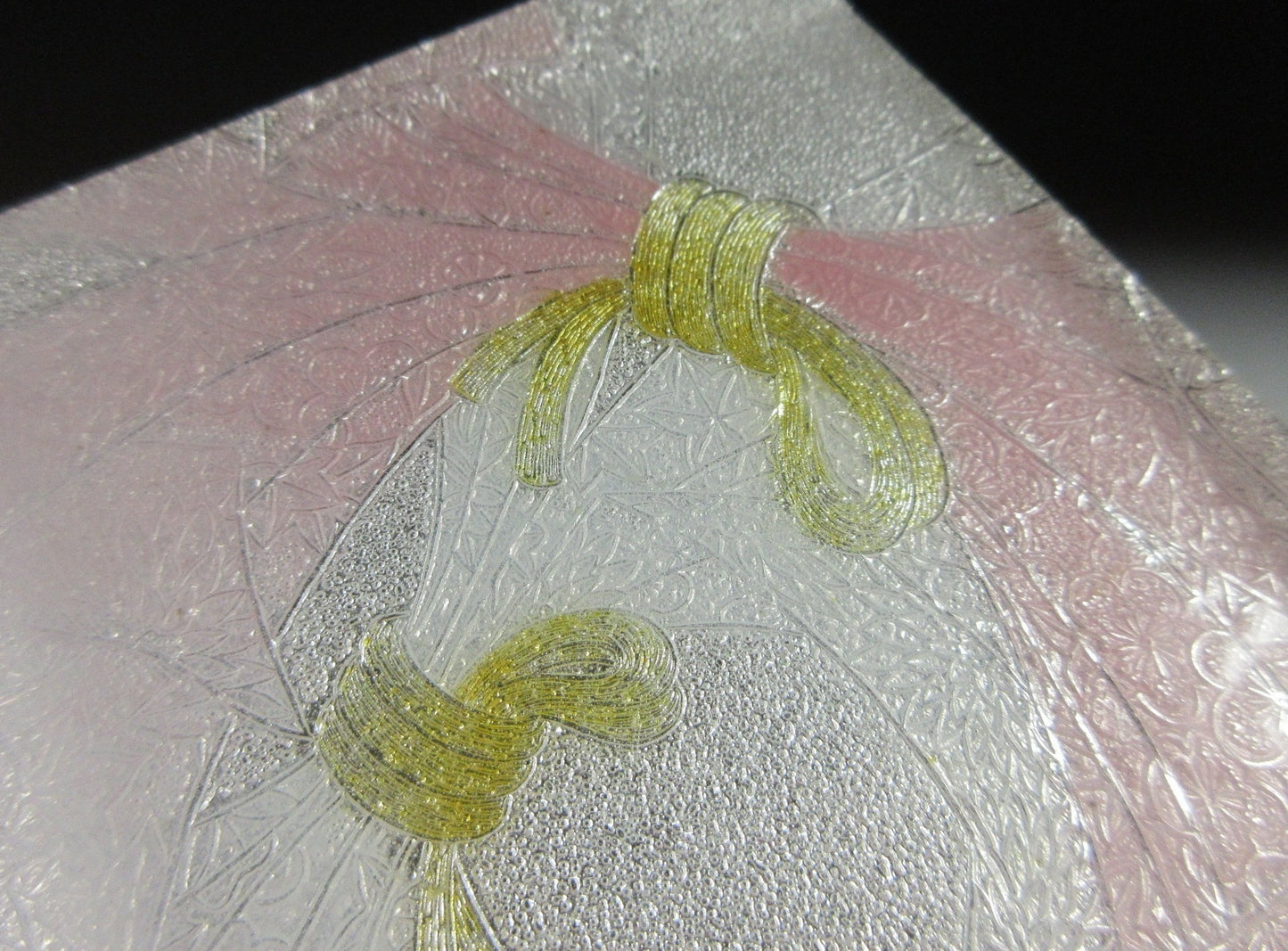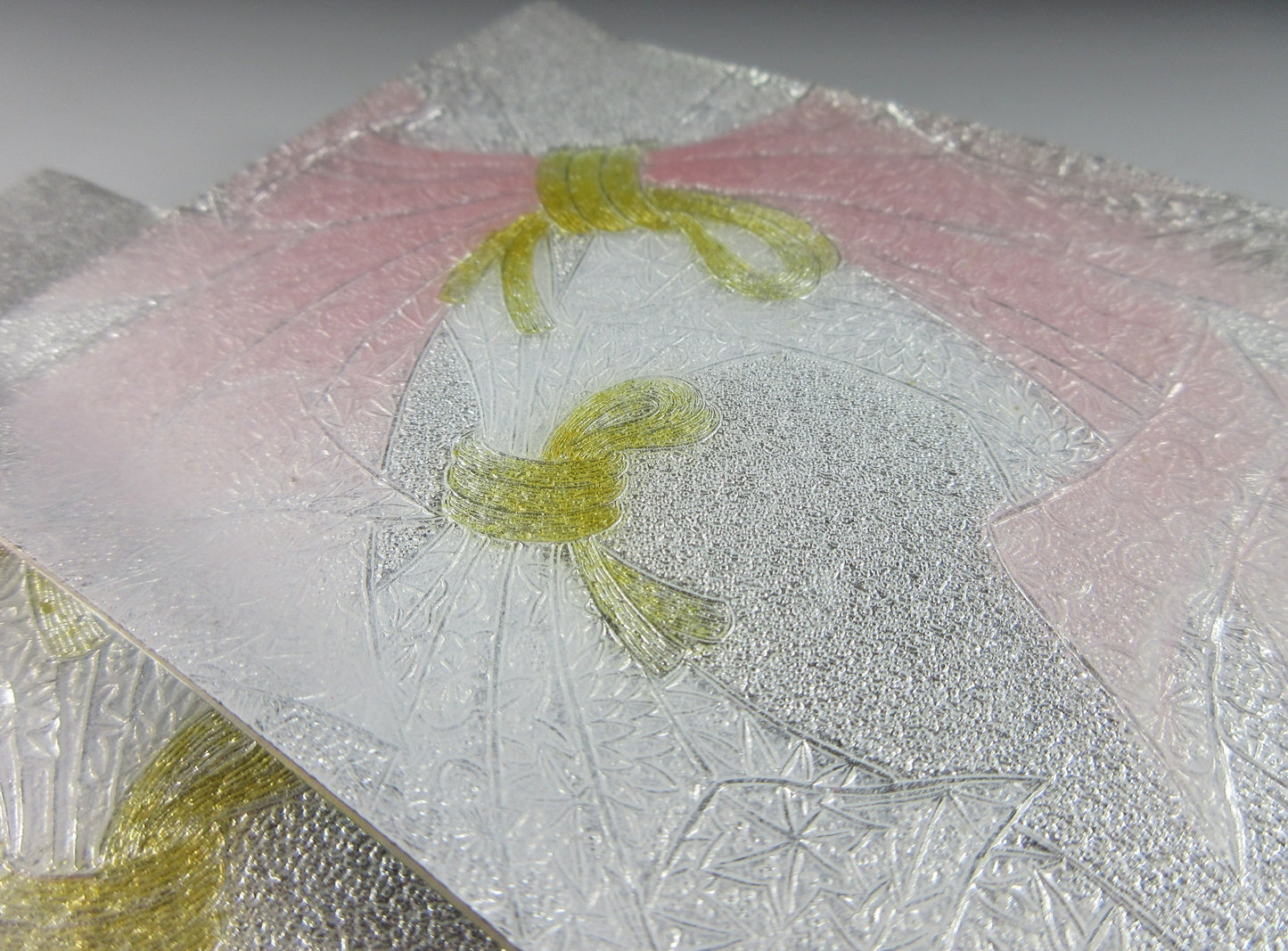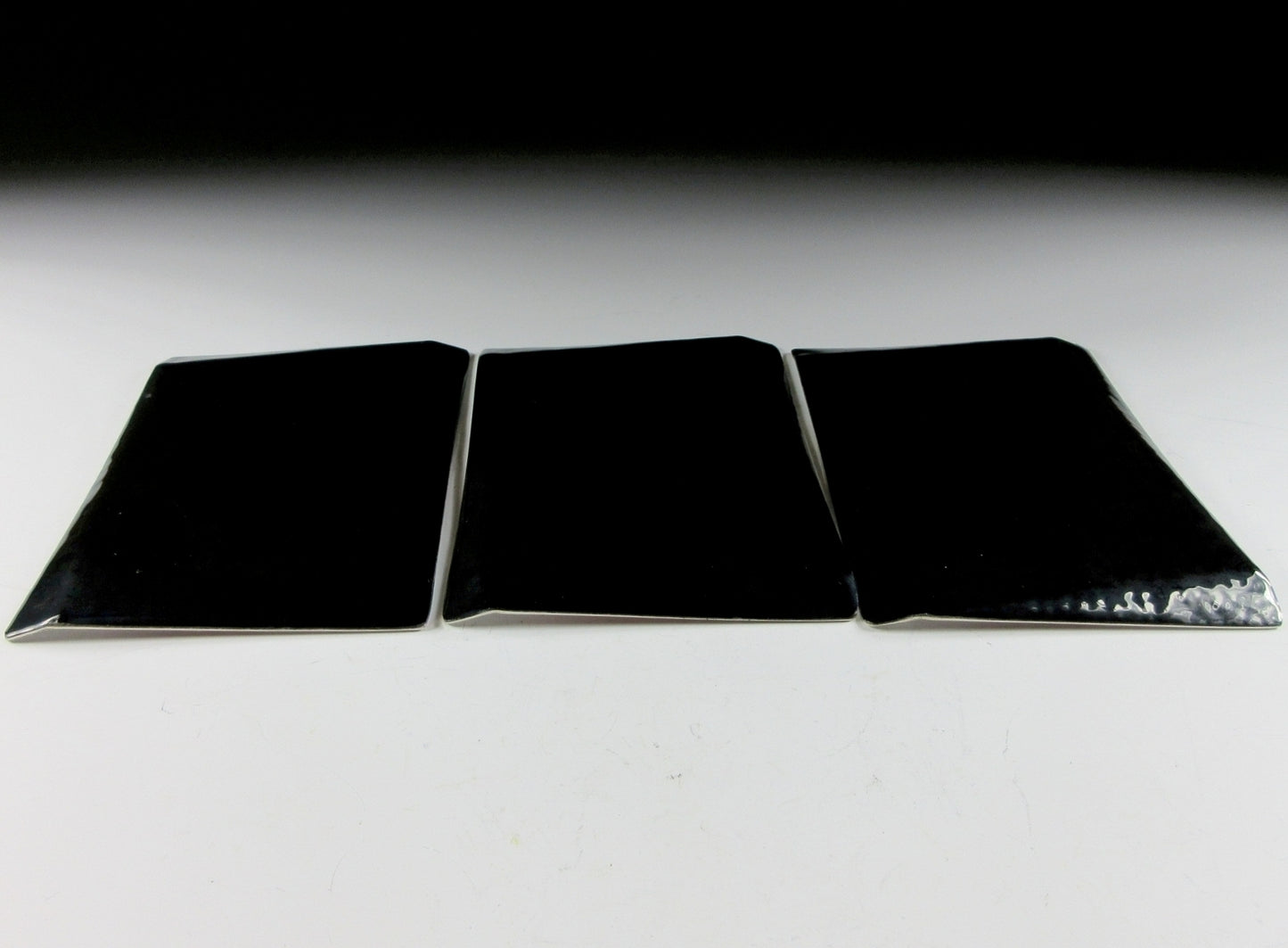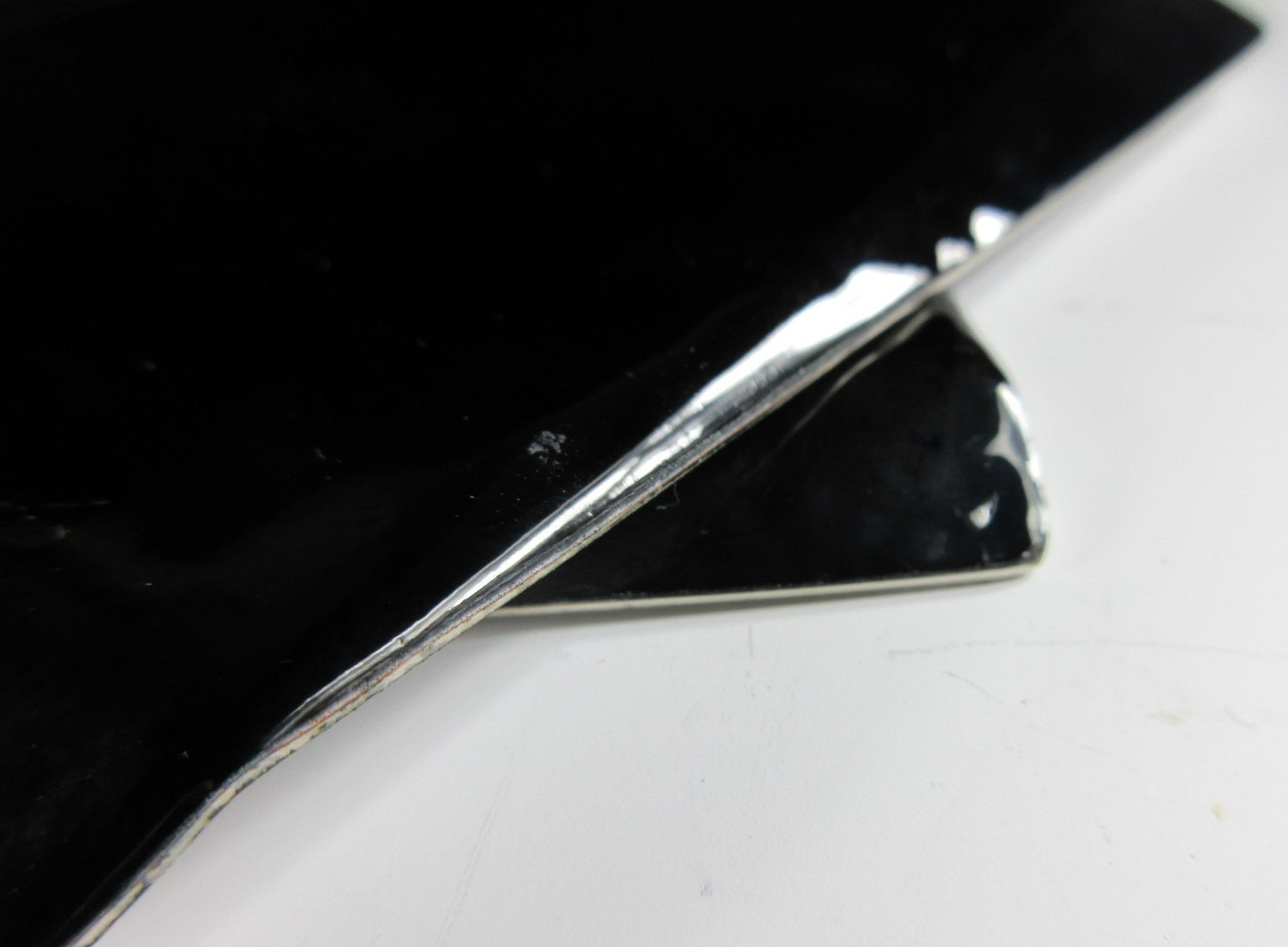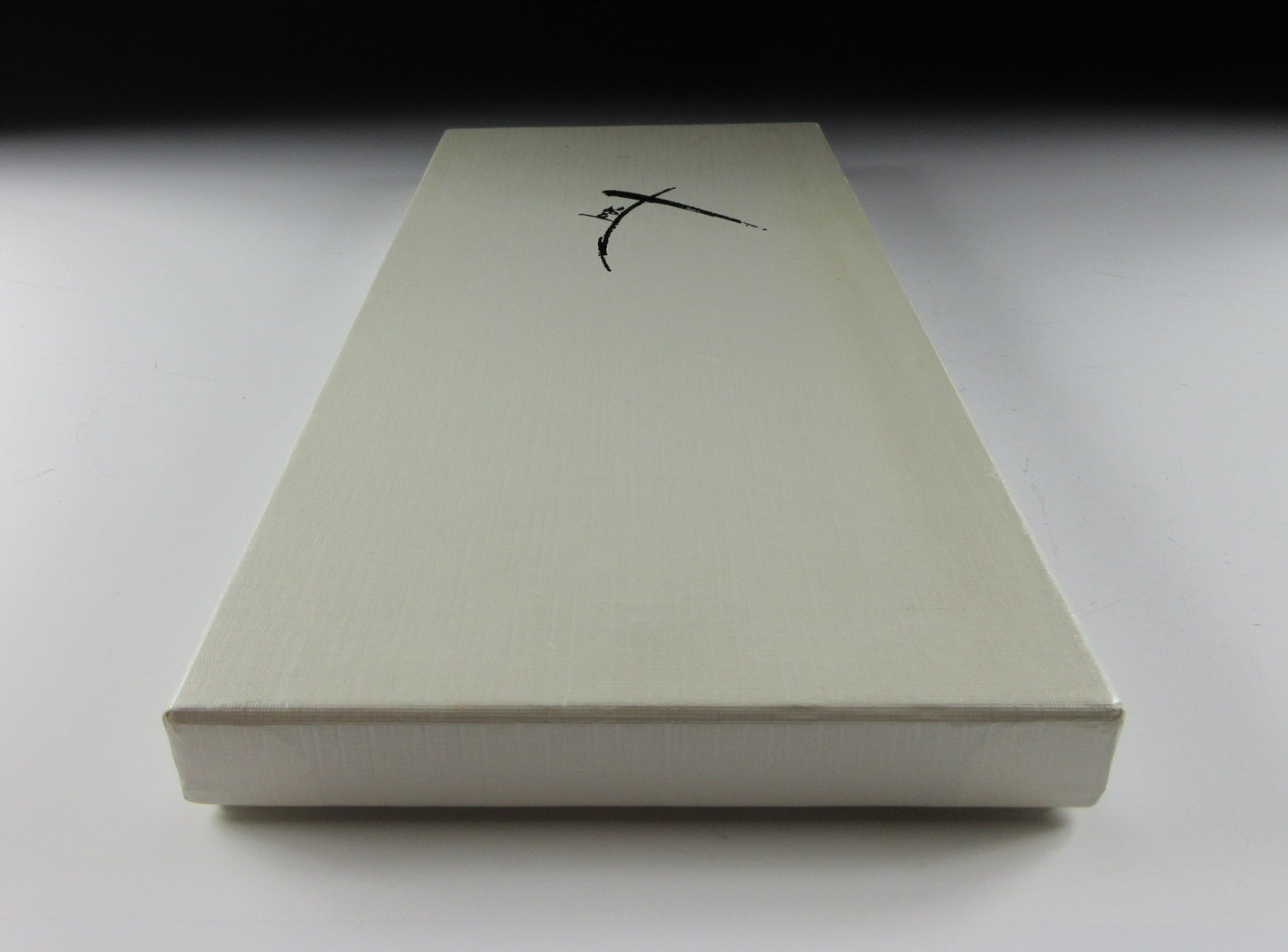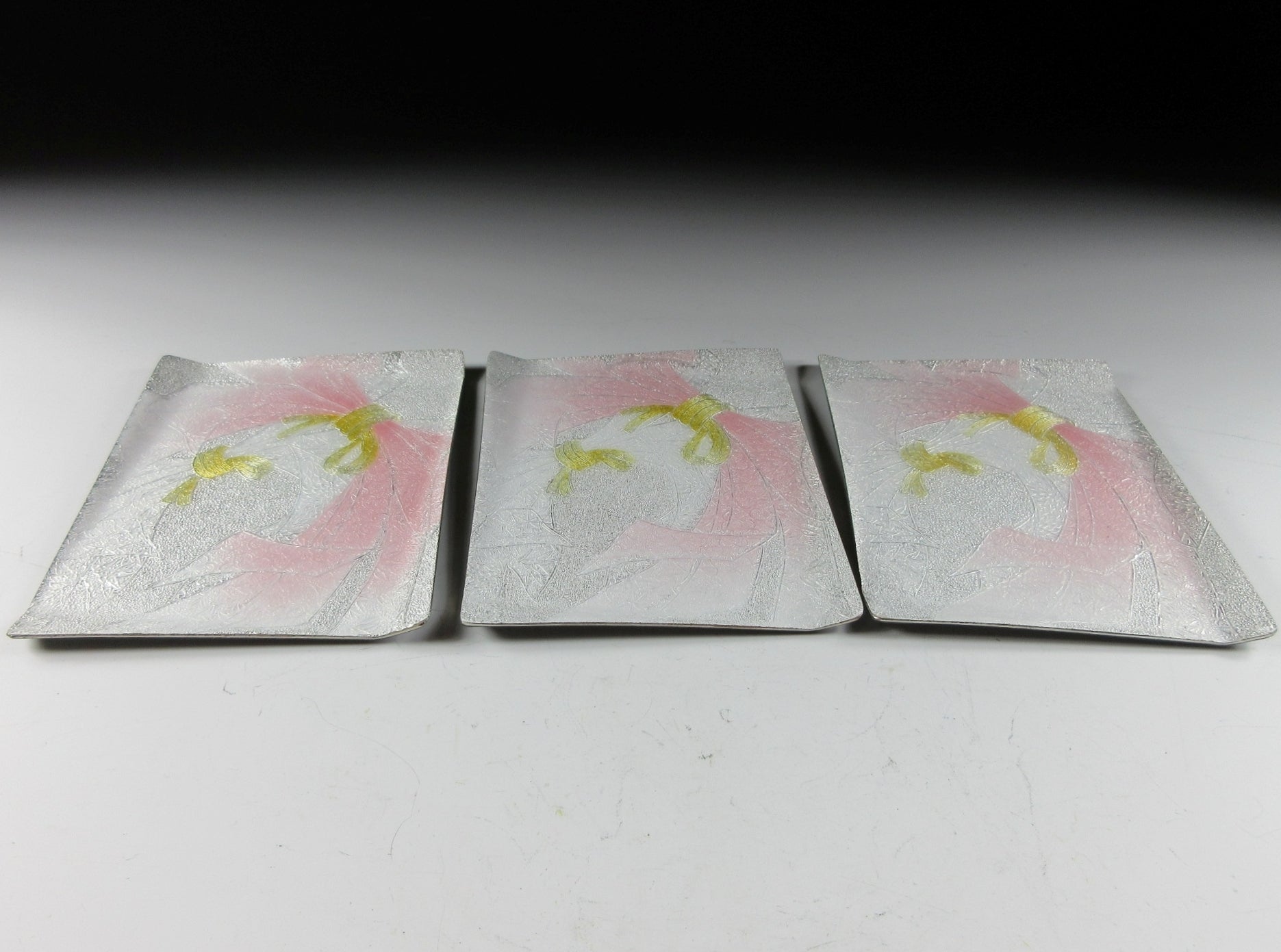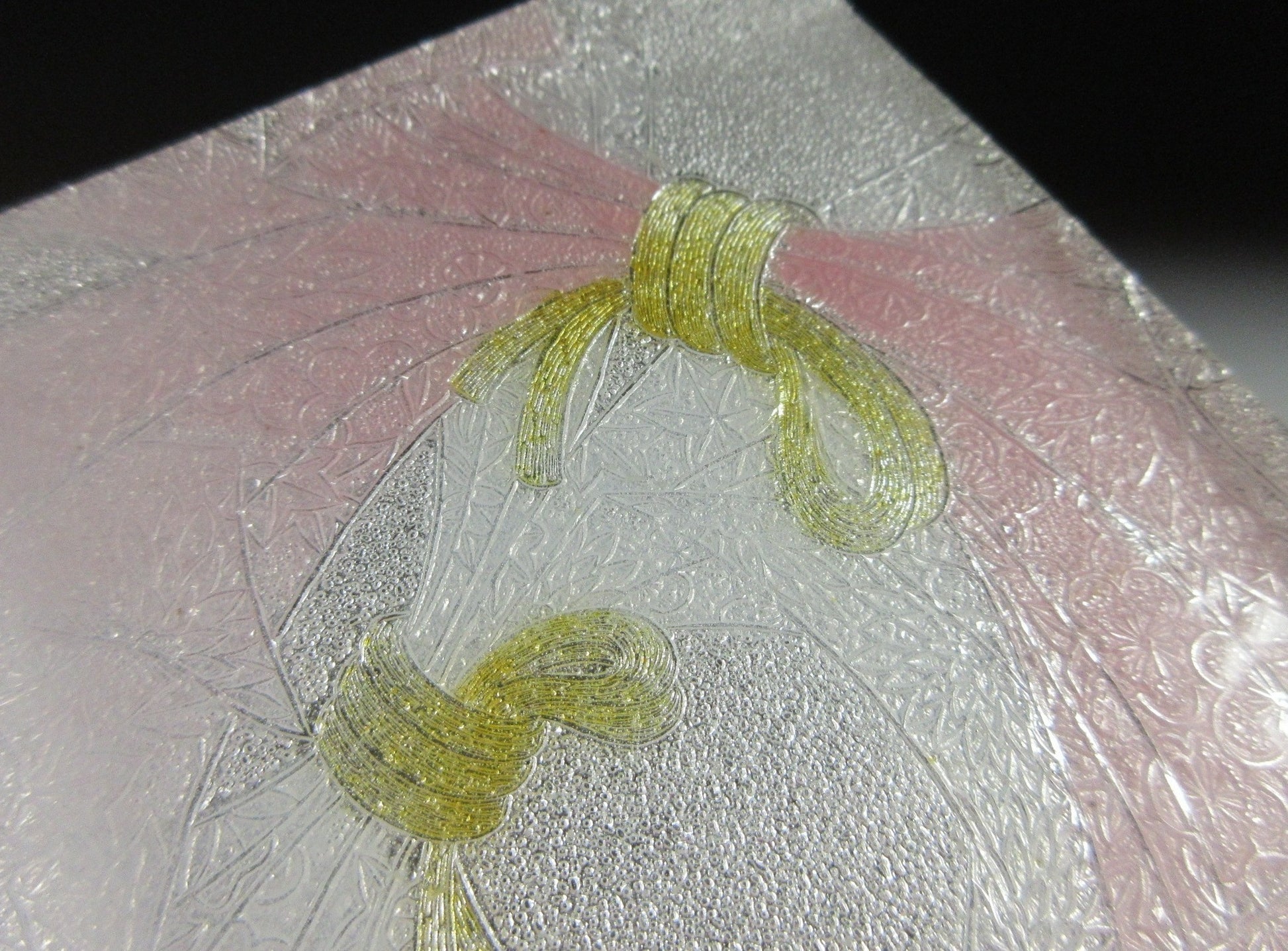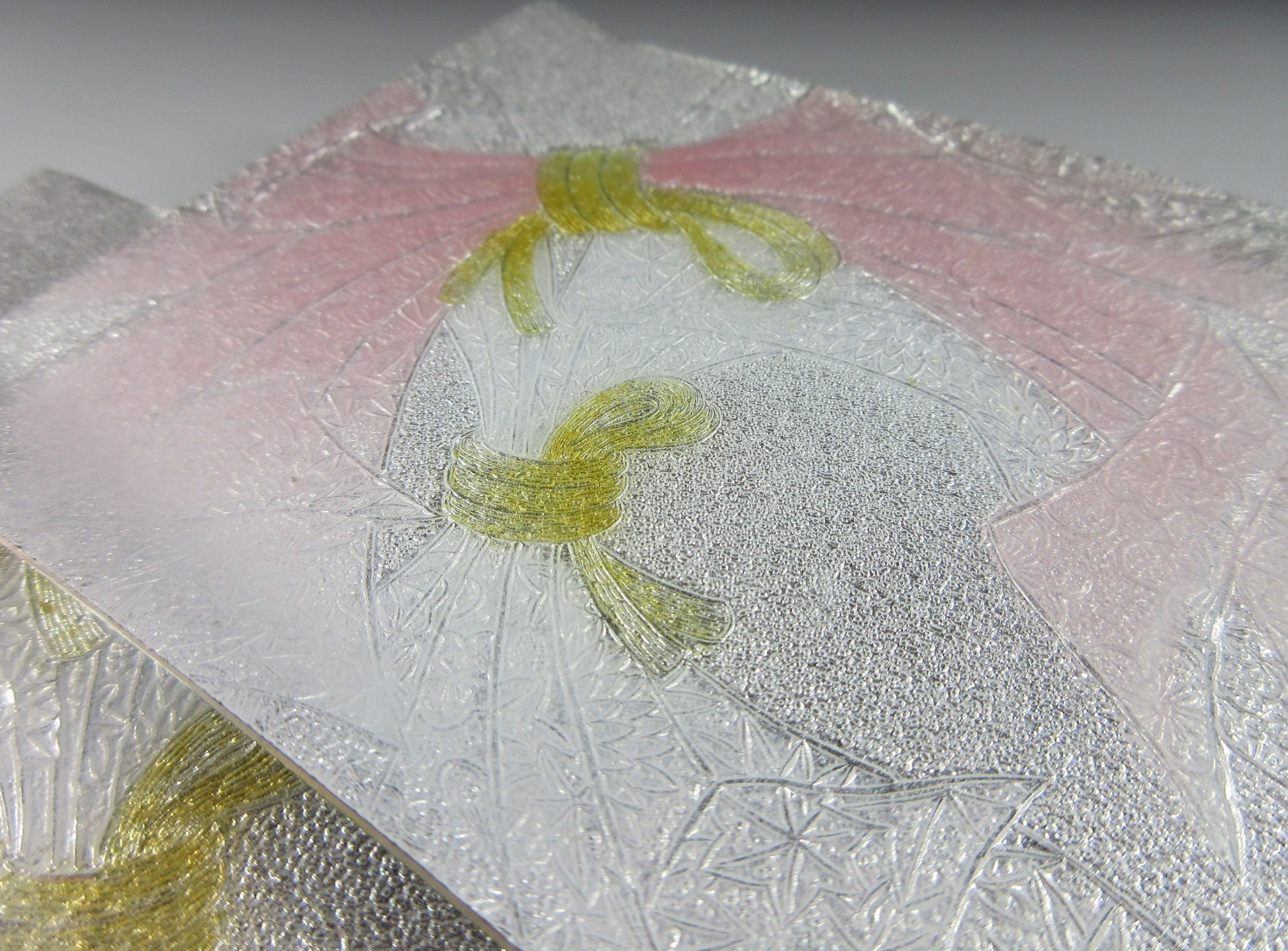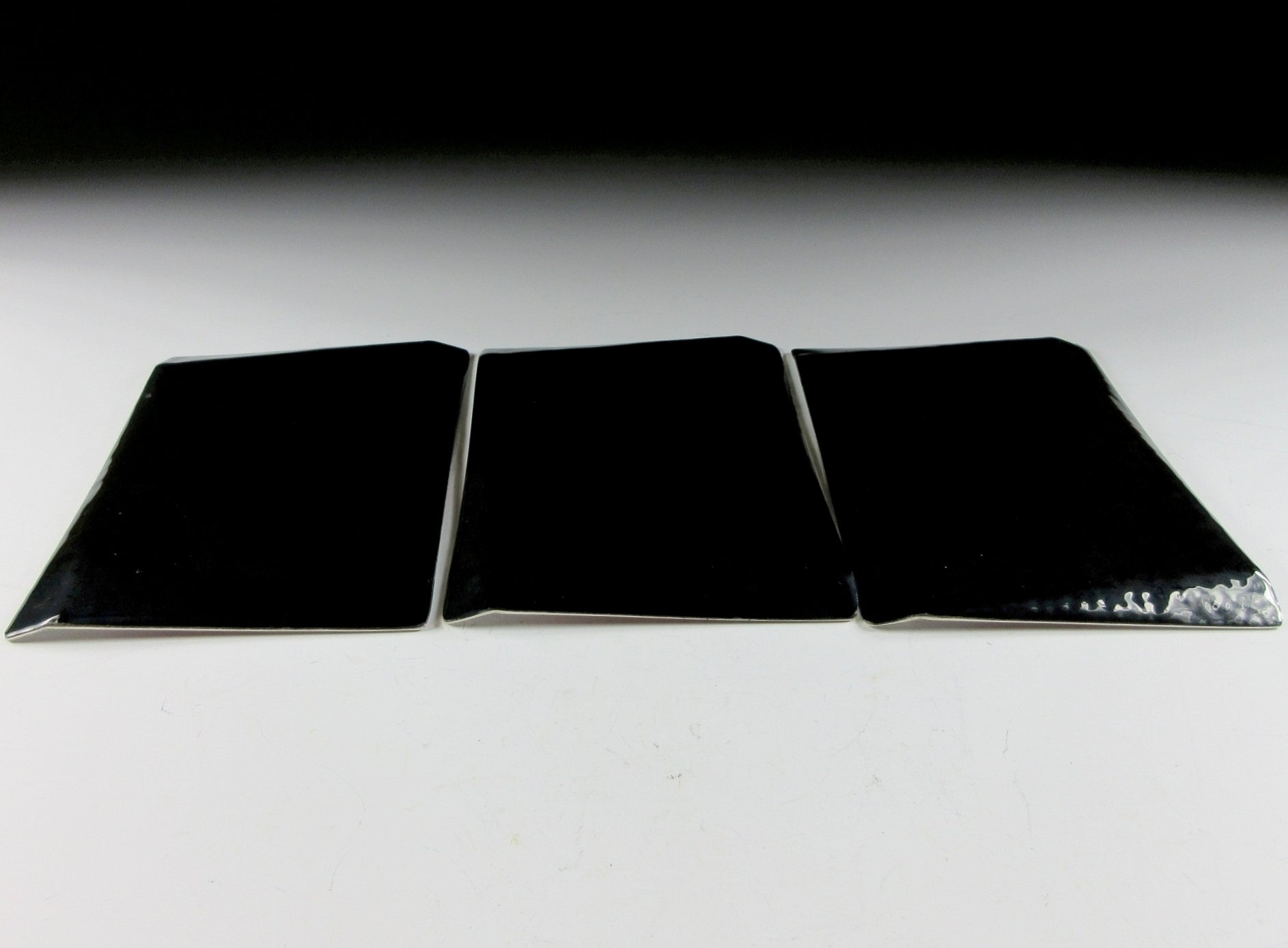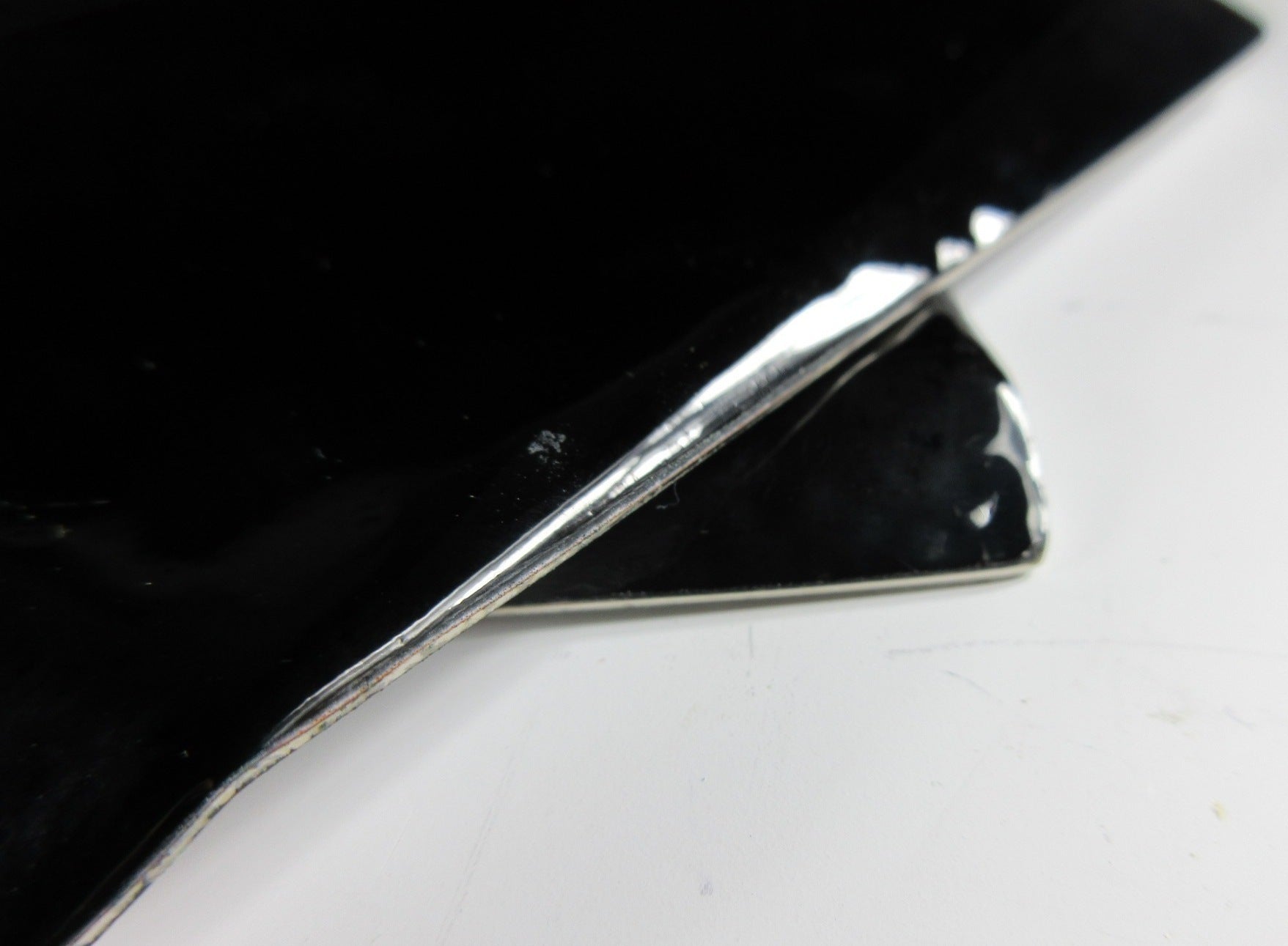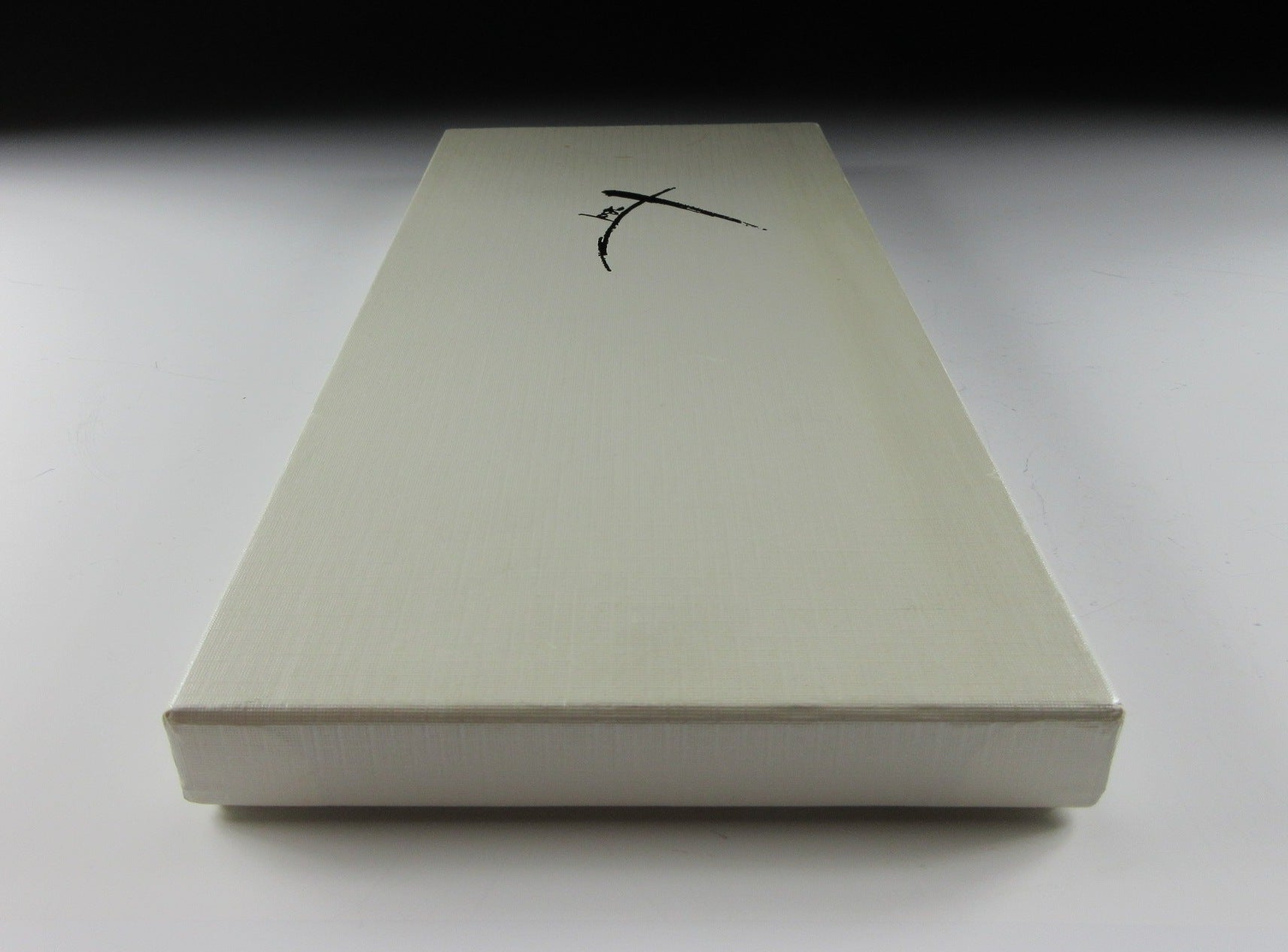Kominka Zakka
Set of Three Hinode Japan Cloisonné Plates
Set of Three Hinode Japan Cloisonné Plates
Couldn't load pickup availability
*SHIPPING OPTIONS VARY DEPENDING ON THE DESTINATION, PLEASE SCROLL TO THE END OF THIS LISTING FOR MORE DETAILS.
This listing is for a set of three cloisonné tea plates made around 20 years ago by Hinode Japan. They consist of enamel on copper, and are classified as the ‘musen’ wireless type. The back of each plate features black glossy enamel, and the front is decorated with a tabane-noshi pattern. Tabane means bundled and noshi is a folded ornament attached to gifts. The noshi pattern is considered auspicious and symbolises strong bonds and connections between people. It is also a symbol of longevity. This is a lovely set to welcome the new year, and they’re easy to clean. The three plates come with their original paper storage box.
Hinode is a Japanese cloisonné maker established in 1959. They have been making and selling high quality cloisonné products for the past 50 years, and they are one of three leading cloisonné makers in Japan. Hinode produces specialty items aimed at those with more refined tastes, and their belief is that their products should have the same lustrous appearance as a Buddhist jewel. Export Hinode is branded as ‘Tutanka’, the plates in this listing were made for the domestic market. **Fellow sellers, this information was researched by Kominka Zakka and CANNOT be used in your own listings.
Shippo-yaki, or Cloisonné as it is otherwise known, is an enamelling technique in which the pattern is formed by wires soldered to the surface of the object to be decorated, which is usually made from copper, forming cells or cloisons, each of which holds a single colour of enamel paste which is then fired, and ground and polished. The first cloisonné produced in Japan is believed to date back to the Nara period (646-794 CE). Much later during the Edo period (1603-1868 CE) the crafting of Japanese cloisonne became more widespread. It reached its most significant stage in the mid-1800s when Tsunekichi Kaji and Hirata Dojin perfected the cloisonné technique that led to a flourishing export trade and magnificent art form. Shippo yaki uses many techniques including yusen cloisonné (with wires), musen cloisonne (wireless), shotai or plique-a-jour, ginbari and pigeon blood cloisonné.
Sizes
Paper Box: H.2.3cm (0.9”) x 30.5cm (12”) x 14cm (5.5”)
Plates: H.0.5cm (0.1”) x L.11.9cm (4.6”) x W.8.8cm (3.4”)
Condition
The entire set is in very good condition aside from some general surface wear.
THESE ARE SHIPPING ESTIMATES BASED ON THE CURRENT GLOBAL SITUATION
**Germany, France, Greece, Spain, Poland, Austria, Slovakia, Lithuania, Slovenia: NO SHIPPING. Very strict and expensive packaging laws in place and we are not licensed to send products to these countries. We have no plan to register at this time because the process is in some cases very expensive and complicated, plus each country has its own set of regulations and application process.
**USA, UK, Canada, Australia, New Zealand, Switzerland, Norway: Airmail Small Packet (approx. 15-28 days). Combined shipping available up to 2kgs for Airmail Small Packet (please send us a message).
**Asia: Airmail Small Packet (approx. 15-21 days). Combined shipping available up to 2kgs for Airmail Small Packet (please send us a message).
**Central Asia, Middle East, South Africa, Brazil, Mexico: EMS Express 10-15 days.
**Russia: No shipping methods available.
Share
